Stepper motors are often categorized by the number of phases in their construction, with 2-phase and 5-phase versions being common designs. And although 2-phase versions are more widely adopted, 5-phase stepper motors offer performance advantages that make them the preferred choice in some applications.
The basic construction of a hybrid stepper motor includes two rotor cups, each with 50 teeth. The rotor cups are magnetized axially by a permanent magnet, so that the teeth of one cup are all north poles and the teeth of the other cup are all south poles. With 50 teeth per rotor cup, the pitch, or distance between teeth, is 7.2° (360° ÷ 50 = 7.2°). The two rotor cups are offset by ½ tooth pitch, so the combination of the two cups acts as a 100-tooth rotor, with 50 pole pairs (50 sets of north-south teeth).
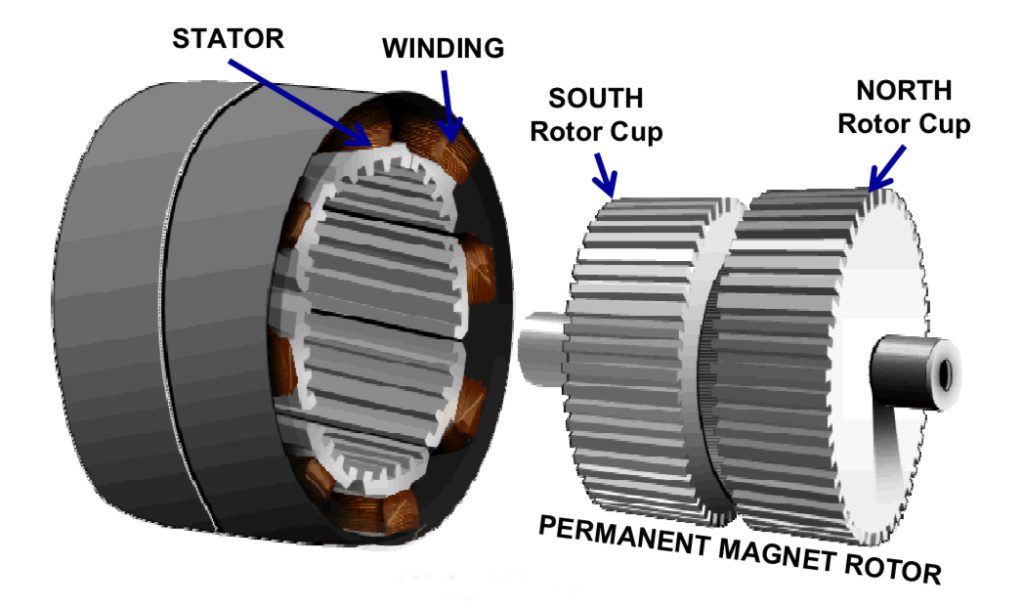
Image credit: Microchip Technology, Inc.
The stator is made up of toothed poles, and each pole has a winding. In the case of a 5-phase stepper motor, there are ten poles, so that each of the five phases consists of two poles, orientated at 180° to each other. When current is applied to a phase, the two poles in that phase are energized and magnetized as both north or both south.
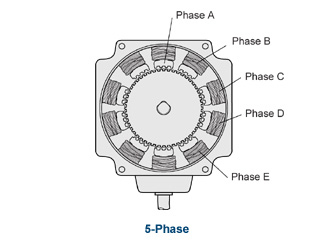
Image credit: Oriental Motor
The rotor and stator construction of a 5-phase stepper motor means that each pulse of current moves the rotor by 1/10 of a tooth pitch, for a step angle of 0.72°.
Step angle = 360° ÷ (2 * # stator phases * # rotor pole pairs)
Step angle = 360° ÷ (2 * 5 * 50) = 0.72°
This small step angle translates to higher resolution than 2-phase motors, which have a step angle, or resolution, of 1.8°. Microstepping can further reduce the resolution of a 5-phase stepper motor by 250 times, for a step angle as small as 0.00288°.
Five-phase stepper motors also have less torque ripple, and in turn, more usable torque than other designs. The torque produced by each phase contributes to the total output torque of the motor. As each phase is energized and the rotor moves, a sinusoidal torque-versus-displacement curve is produced. The difference in the curves for each phase represents the torque ripple of the motor. The more phases that contribute to total torque, the smaller the difference in the torque-versus-displacement curves, and the lower the torque ripple. Lower torque ripple also means more usable torque, lower vibration, and less noise.
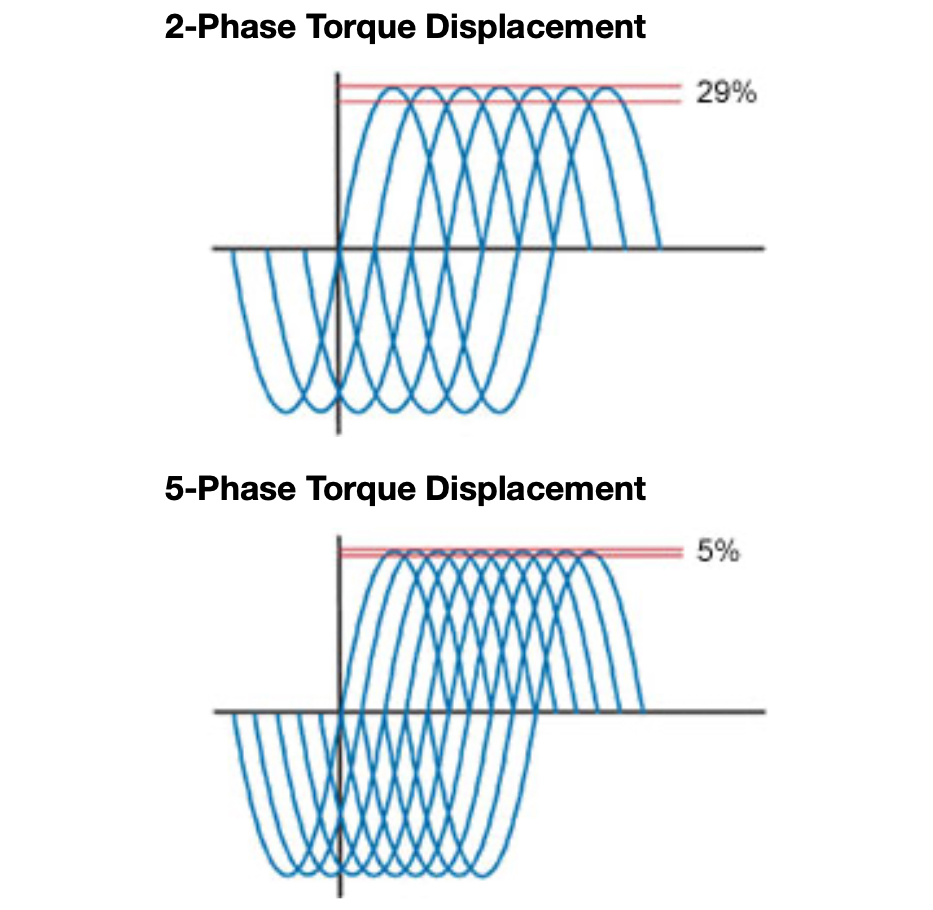
Image credit: Oriental Motor
One of the drawbacks of stepper motors is that they can lose synchronism if they overshoot (take too many steps) or undershoot (miss steps). In other words, the motor can physically gain or lose steps in relation to the drive’s commands, and without a feedback device, the drive can’t detect the motor’s incorrect position.
But with 5-phase stepper motors, losing synchronism is much less likely, because it requires that the rotor either overshoot by more than ½ tooth pitch or undershoot by less than ½ tooth pitch. Since ½ tooth pitch is 3.6°, and the step angle of a 5-phase stepper motor is 0.72°, the motor would have to overshoot or undershoot by 5 steps (3.6° ÷ 0.72° = 5 steps) before it loses synchronism — an unlikely scenario in most properly sized applications.

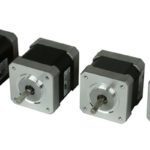
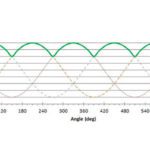
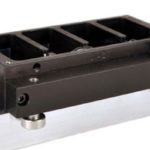
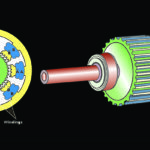
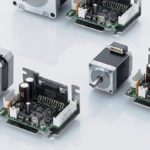

Leave a Reply
You must be logged in to post a comment.